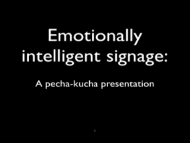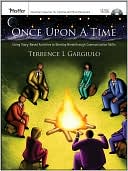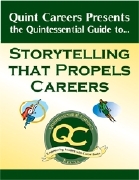
What a concept … I actually found a cool new resource through the Google ads here on A Storied Career. It’s Were You There? which is in beta. I’d consider this another convergence between social media.
Here’s what the founder, Jonathan Hull, says about the site:
Our mission is simple: to create a comprehensive and easy-to-use archive where the memories that shape our lives – and history – can not only be preserved but shared, creating a conversation about the moments in life that mattered.
The concept grew out of my own passion for storytelling both as a former TIME magazine bureau chief in Jerusalem and Chicago and a bestselling novelist. Over the years I’ve received many letters from readers who were moved to share some of the unforgettable moments in their own lives, hopeful that someone might listen. Because what are stories without an audience? At heart, we are all storytellers, telling and retelling our stories to give structure and meaning to our lives. The more letters I read, the more I realized that we all have stories that deserve to be told and remembered. But when I looked online for a place where these memories might come together in a meaningful way, whether from years ago or something that happened last week, I couldn’t find one.
So I created WereYouThere.
Hull invites “select a category and follow your memory back.” He says that if you can’t can’t find what you’re looking for (for example, I didn’t see the Kent State shootings or the Challenger or Columbia tragedies), “simply add a new topic yourself.”
Hull notes that you can also join a Community or start your own.
Hull’s examples of things you can do at WereYouThere:
-
- Share stories, photos and videos of growing up in your hometown, your old hangouts, high school or college.
- Remember the March from Selma, Woodstock or what it was like to live through Katrina.
- Reunite with others who served in your combat unit at Omaha Beach, Chosin Reservoir, Da Nang or Takrit.
- Relive the sites and sounds of the Summer of Love, your favorite travel spot or the Whisky a Go Go when The Doors took stage.
- Share a passion for ‘56 Chevys, Elvis or Coltrane.
- Recall the everyday scenes of a time gone by, from the fads and fashion to the cars, the music and the dreams that defined your generation.
People really are starting to share stories in this venue.
Extended entry lists other categories on Were You There?
EVENTS
John F. Kennedy’s assassination, 9/11, Woodstock, Hurricane Katrina, Attack on Pearl Harbor, The Cuban Missile Crisis, The Holocaust
PLACES
Venice, Prague, Ground Zero, The Vietnam Memorial, Somme, The Vatican, The Pyramids of Giza
PEOPLE
Elvis Presley, The Beatles, Bob Dylan, Bruce Springsteen, Pope John Paul II, Jim Morrison, Oprah Winfrey, Frank Sinatra
ERAS
The Great Depression, Summer of Love, Civil Rights Movement, The Cold War
SCHOOLS
Denison University, New Trier High School, University of Notre Dame, New Canaan High, Princeton University
MILITARY
Tet Offensive, World War Two, 80th Infantry Division, Navy, Red Beach, Korean War Veterans Association
 Pecha Kucha, which originated in Japan as a discipline to keep architects’ presentations from turning into “death by PowerPoint,” is a new way to present a story. The rules are
Pecha Kucha, which originated in Japan as a discipline to keep architects’ presentations from turning into “death by PowerPoint,” is a new way to present a story. The rules are






 An International Day for Sharing Life Stories has been set for May 16, 2008. The day will be an opportunity for people around the world to gather in community halls, classrooms, public parks, theaters, auditoriums, as well websites, email exchanges, and virtual environments to hear each other’s stories.
An International Day for Sharing Life Stories has been set for May 16, 2008. The day will be an opportunity for people around the world to gather in community halls, classrooms, public parks, theaters, auditoriums, as well websites, email exchanges, and virtual environments to hear each other’s stories.